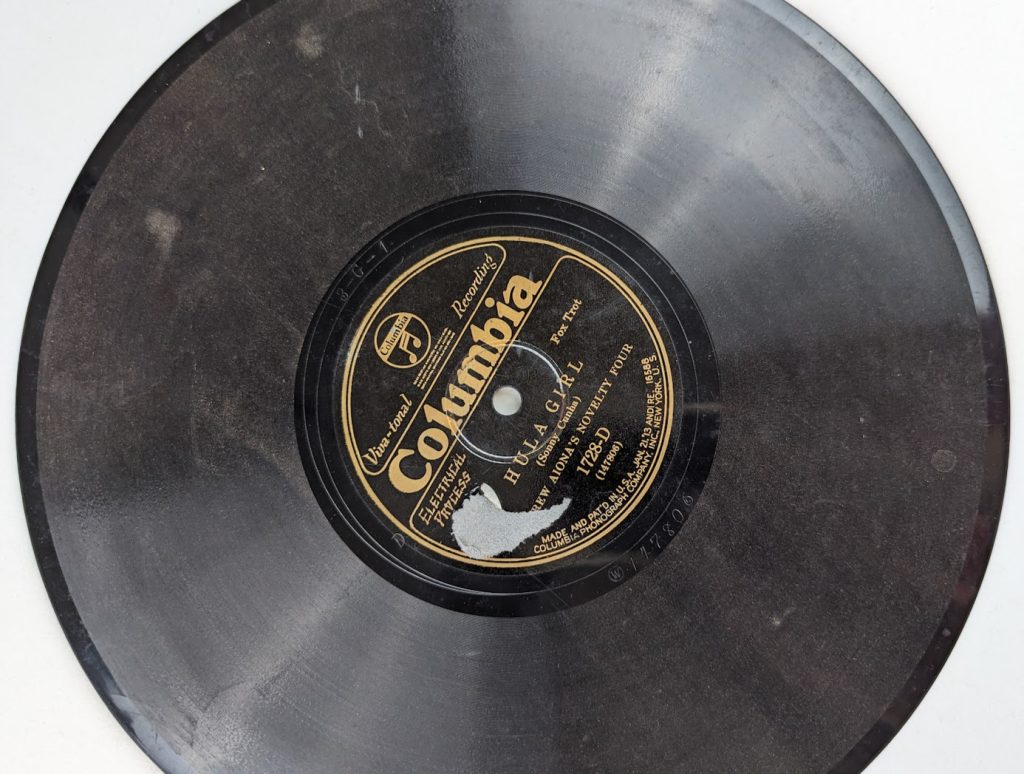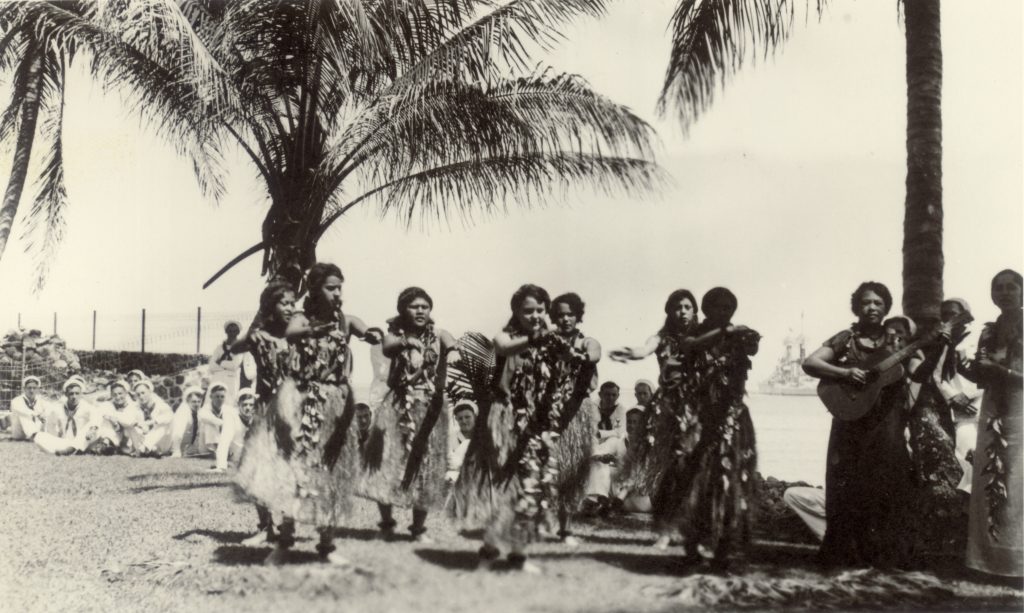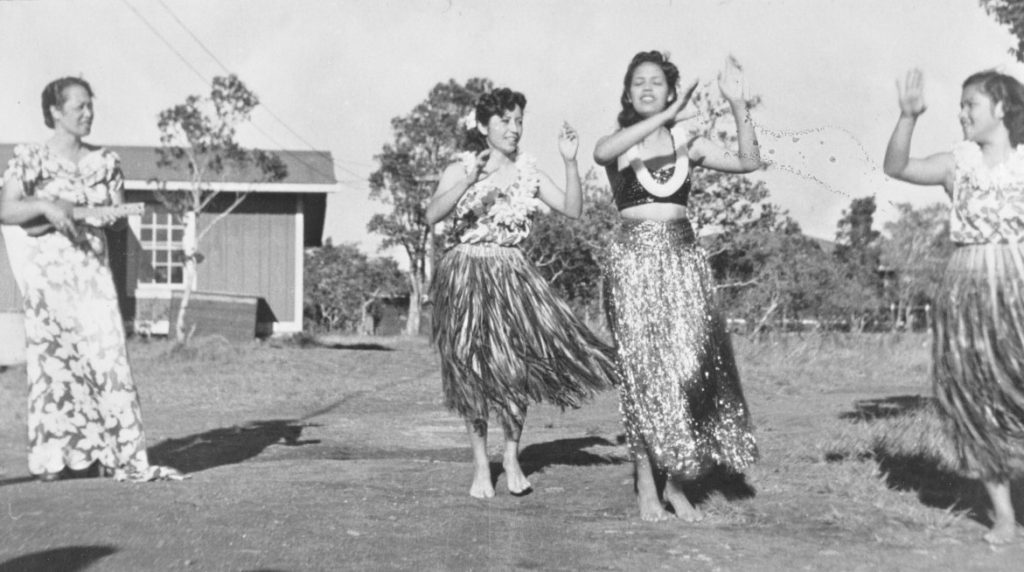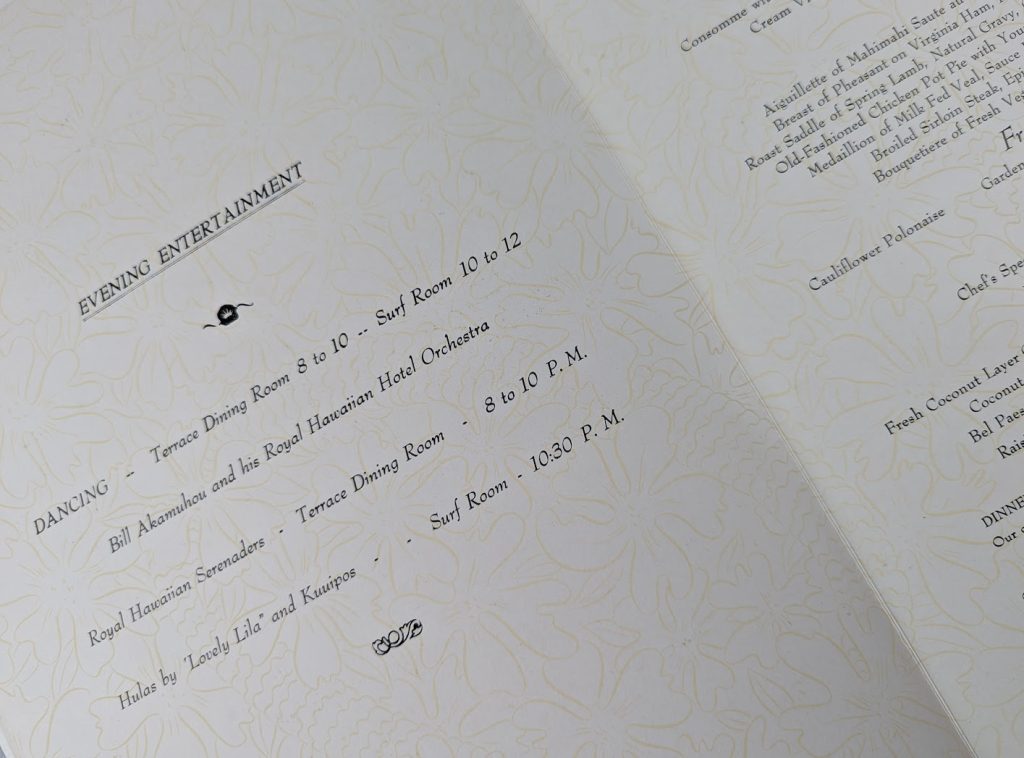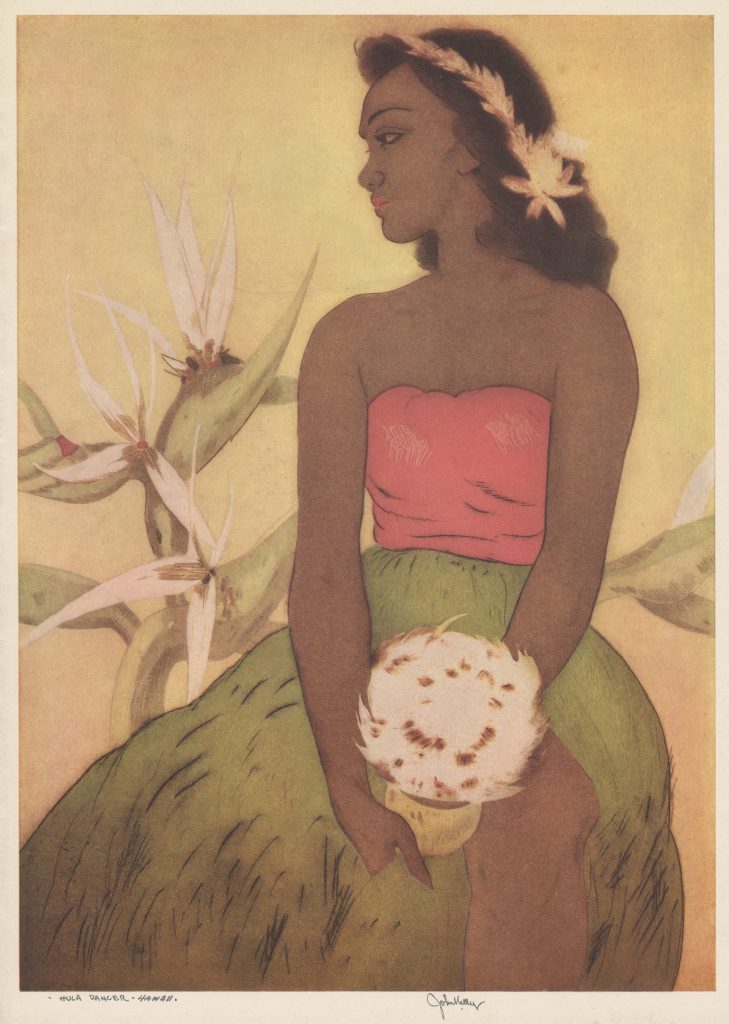Each spring thousands of people gather in Hilo, Hawaiʻi for the annual Merrie Monarch Festival, a unique celebration of hula (dance). The event perpetuates many aspects of Hawaiian culture, including oli (chants), mo‘olelo (legends) and distinct ʻaʻahu (costumes). Hālau (schools) from across the state and around the world perform two distinct types of hula: kahiko (traditional) and ‘auana (contemporary).
Hula ‘auana originated in the 19th century as missionaries introduced the western views of modesty. Clothing became less revealing. Women wore long dresses, rather than paʻu (skirts) and men wore pants instead of malo (loincloth). In the 20th century, groups began to offer hula performances for American soldiers and tourists. Hula ʻauana evolved and now incorporates various western traditions: mele (song), lead vocals, and introduced stringed instruments (ukulele, guitar, and bass). Costumes might utilize fabric with aloha prints or palaka (checkered shirt), raffia, or even bright cellophane!
The Lyman Museum preserves many hula-related photographs and other objects. To see more, contact the Archives to make an appointment. Learn more at https://lymanmuseum.org/archives/.
Note: Hawaiian diacritical marks comprise just two symbols: the ʻokina (glottal stop) and the kahakō (macron). We use them with Hawaiian place names, but do not add them to proper names if a family or a company does not use them.
